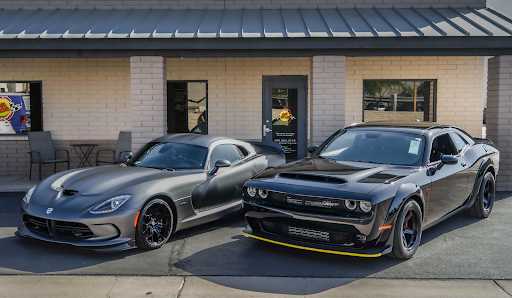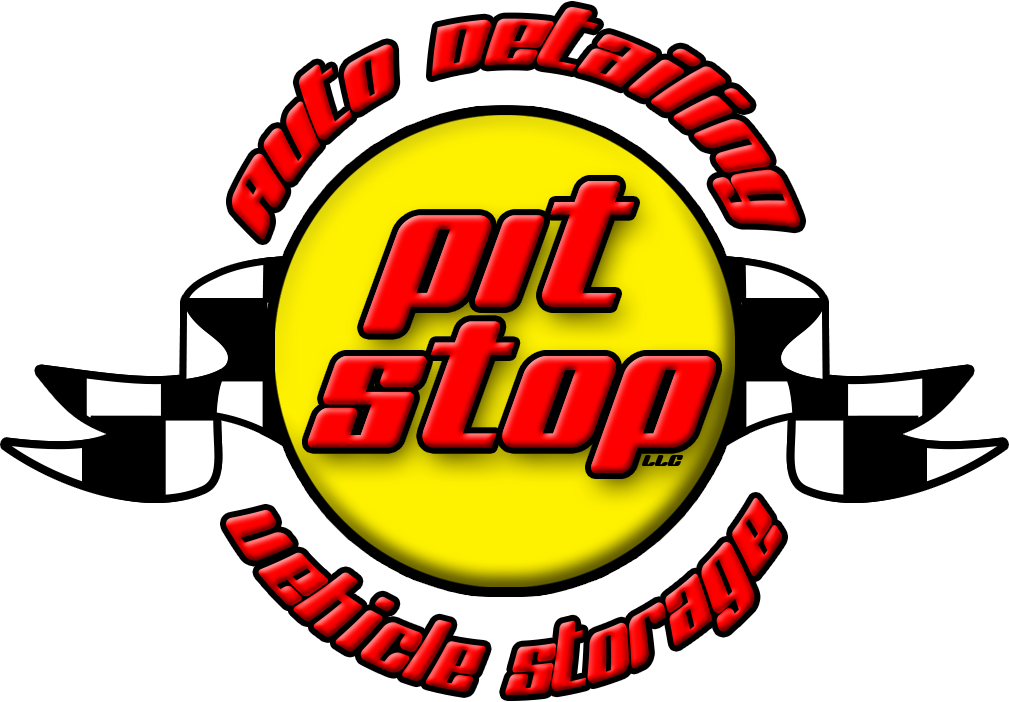Scottsdale Vehicle Water Stains: Desert Paint Protection
GET A FREE ESTIMATEPicture this: you step outside to your driveway in Scottsdale, and your car is covered in white, chalky spots that seem impossible to remove. You're not alone. Arizona has some of the hardest water in the U.S., with cities like Phoenix, Tucson, and Scottsdale ranking high in mineral content. In our desert climate, hard water isn't just an annoyance—it's a significant threat to your car's paint finish. The rapid evaporation in our intense heat leaves mineral deposits behind that quickly etch into your vehicle's surface.
This guide explains why Arizona's hard water poses such a unique challenge and equips you with the knowledge and strategies to protect your investment. We'll show you how to maintain your vehicle's showroom shine against the desert elements.

Understanding the Desert's Hard Water Threat
The Science Behind Stubborn Spots
Water spots form when mineral-rich water evaporates, leaving behind concentrated deposits of substances like calcium and magnesium that bond with and etch into your car's paint. This etching can cause permanent damage if neglected. The damage potential of water spots to automotive surfaces is mostly based on the amount of minerals or harmful chemicals contained within water when it evaporates from a vehicle's surface.
Why Arizona's Water is Different (and Damaging)
Scottsdale's water hardness levels range from 340-430 mg/L in areas south of Indian School Road, with levels from Indian School Road to Chaparral Road measuring 340-370 mg/L. Our intense dry heat accelerates water evaporation, making the problem worse by quickly concentrating minerals on your vehicle's surface. Common local sources include sprinkler systems, well water, and certain car washes that contribute to these stubborn deposits.
Sprinkler water usually comes from an untreated water source, meaning it's even harder than normal tap water. These mineral-rich droplets dry rapidly in Arizona's sun, leaving behind concentrated deposits that bond aggressively with your paint.
The True Cost: Permanent Paint Damage
Untreated water spots lead to serious long-term consequences. Over time, these contaminants stack up and slowly deteriorate the car paint. You'll notice dullness, discoloration, fading, paint oxidation, and potential corrosion. These issues significantly diminish your car's aesthetic appeal and resale value.
Identifying and Assessing Water Spot Damage
Mineral vs. Environmental Spots: Knowing the Difference
We need to distinguish between common white, chalky mineral spots from hard water and more corrosive acid rain spots. Rainwater is usually acidic since it naturally dissolves CO₂ from the atmosphere to form a weak carbonic acid with a pH level of about 5–5.5. Proper identification is critical for effective treatment.
Where Spots Commonly Accumulate on Your Vehicle
Hard water accumulation typically appears on body panels, hoods, roofs, windows, windshields, metallic surfaces like handles and chassis, glass mirrors and headlights, and wheel rims with chrome accents. These areas receive the most water exposure during washing or from environmental sources.
Effective Strategies for Removing Existing Water Spots
Initial Cleaning: The Foundation
Start with a thorough wash using pH-neutral car wash soap. This removes loose dirt and prevents scratching before spot treatment. Often times, a thorough car wash will remove light or freshly made water spots by cleansing the surfaces of hard mineral deposits before they set up deep inside the paint system.
DIY Remedies for Lighter Spots (with precautions)
The Vinegar Solution: The answer to most hard water spots is distilled white vinegar. Create an equal-parts white vinegar and distilled water mixture. Apply gently with a microfiber cloth, let it sit briefly, then rinse and dry thoroughly. This method works well for surface-level mineral deposits.
Baking Soda Paste: For tougher spots, try a baking soda and water paste. However, exercise extreme caution—this method is abrasive and can scratch your paint if not used properly.
Advanced Techniques for Deep Etching
Clay Bar Treatment: A clay bar is a specialized detailing tool that can remove contaminants from the surface of the paint, including water spots. Start with a thorough wash, then use clay lubricant and gently work the clay bar over affected areas. This removes embedded contaminants and creates a smooth finish.
Machine Polishing: For deeply etched spots, careful machine polishing may be necessary. Paint polishing may be the only removal method for severe hard water spots on automotive surfaces. This involves carefully abrading the paint's top layer to restore shine.
When Professional Intervention is Best
Seek professional help for severe, deeply etched spots or if you're uncomfortable with detailing tasks. Professionals have the expertise and equipment to treat damage correctly while avoiding further harm to your paint.
Long-Term Protection: Desert-Proofing Your Paint
The Importance of Proper Washing and Drying
Consistent use of pH-neutral soap and immediate, thorough drying with high-quality microfiber towels are critical. After washing your car, dry it thoroughly with a soft microfiber towel to prevent water droplets from evaporating and leaving behind mineral deposits. Never allow air drying, especially in direct sunlight.
The Role of Protective Barriers (Wax vs. Advanced Coatings)
Quality Car Wax: Car wax forms a protective barrier that safeguards the car paint against wear and damage. Moreover, it creates a slick and waterproof surface that prevents water spots from developing in the first place. High-quality wax creates hydrophobic properties that cause water to bead and roll off.
Limitations of Wax in Harsh Climates: While effective, wax offers temporary protection and may not suffice against relentless hard water in desert environments. Frequent reapplication becomes necessary in our harsh climate.
Why Advanced Coatings are a Game-Changer for Desert Climates
Superior Durability: Advanced protective coatings like ceramic polymer nanotechnology provide a durable, long-lasting shield that far surpasses traditional waxes. Ceramic coatings are durable and offer incredible resistance against corrosive elements and acid rain.
Hydrophobic Properties & Porous Surface Filling: These coatings form a smooth outer layer that fills microscopic pores in your vehicle's paint. This prevents mineral deposits from bonding and makes surfaces easy to rinse clean without residue. Quality coating formulas work within the paint's structural matrix and add an enhanced layer of protection.
Professional Application: Superior coatings are typically applied by trained technicians for optimal, even coverage and proper curing.
Maintaining Your Spotless Shine in the Arizona Sun
Establishing a Regular Care Routine
We recommend washing every two weeks (or more frequently in high-exposure areas), thorough drying after each wash, and periodic wax applications or professional detailing services. Water spotting may only be avoided completely if water is never allowed to dry on a vehicle's surface.
Avoiding Common Mistakes that Worsen Spots
Never use harsh household cleaners on your vehicle. Avoid letting water air dry, especially in direct sunlight. Avoid direct sunlight: Whenever possible, park your car in a shaded area to prevent water droplets from drying quickly under the sun and causing water spots.
Proactive Measures for Prevention
Park in shaded areas when possible or use a car cover to minimize exposure to water and direct sun. Make sure that you avoid parking your car close to [sprinklers] and if you do, wash off those droplets with a cloth so no residue will be left overnight.
Achieving and maintaining a spotless exterior in Scottsdale's unique desert climate requires understanding, proactive protection, and consistent care. By adopting these strategies—from proper washing techniques to investing in advanced protective coatings—you can effectively combat hard water spots, preserve your vehicle's finish, and maintain its value and pristine appearance for years to come.
At Pit Stop Auto Detailing & Vehicle Storage, we understand the unique challenges Arizona's hard water presents to your vehicle. Our expert exterior detailing services include clay bar decontamination, paint sealant application, and ceramic coating protection specifically designed to combat Scottsdale's mineral-rich water conditions. We've been serving the Scottsdale community since 2007, helping vehicle owners protect their investments against the desert's harsh elements.
Don't let hard water spots permanently damage your vehicle's paint.
Schedule your professional exterior detailing service today and let our experienced team restore your ride's showroom shine while protecting it from future water spot damage.
Share with your friends




